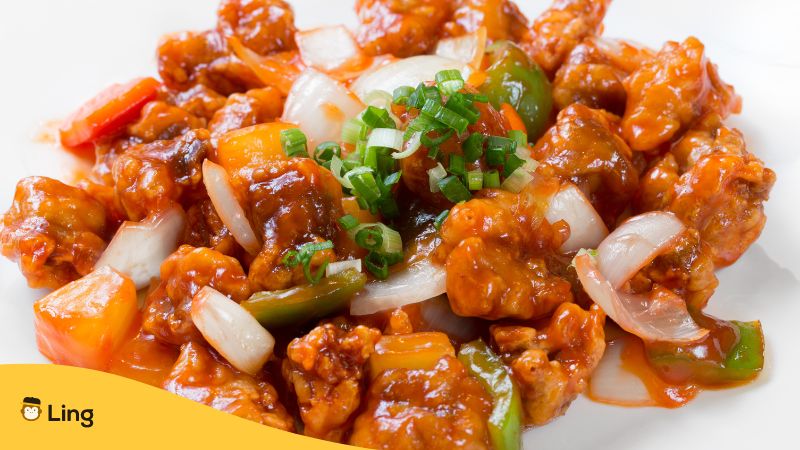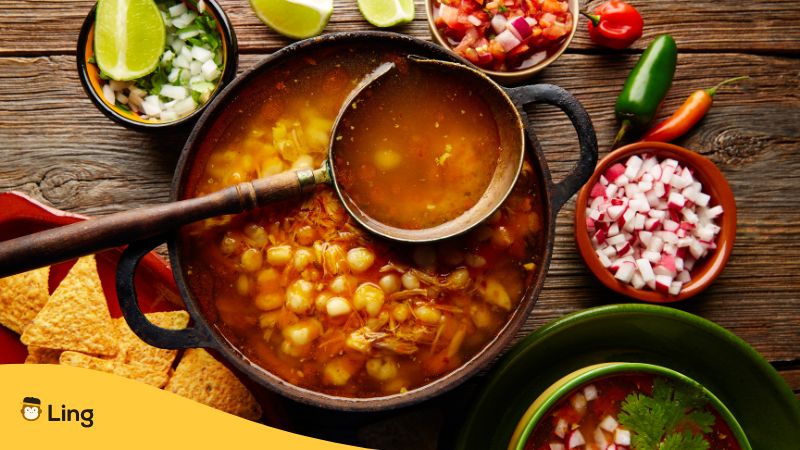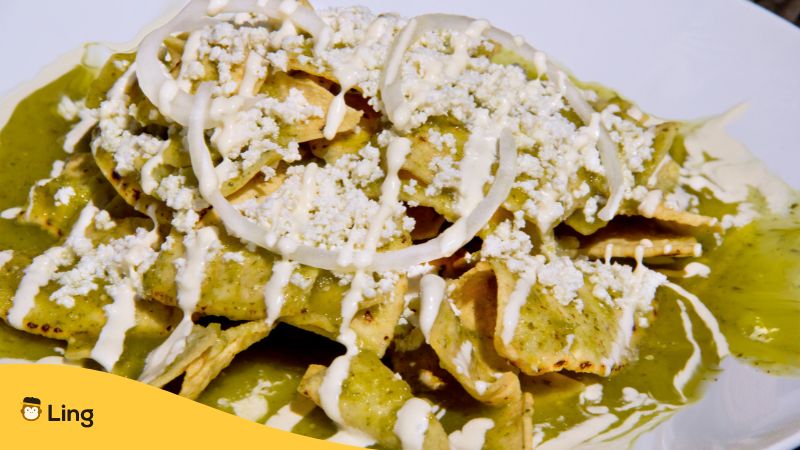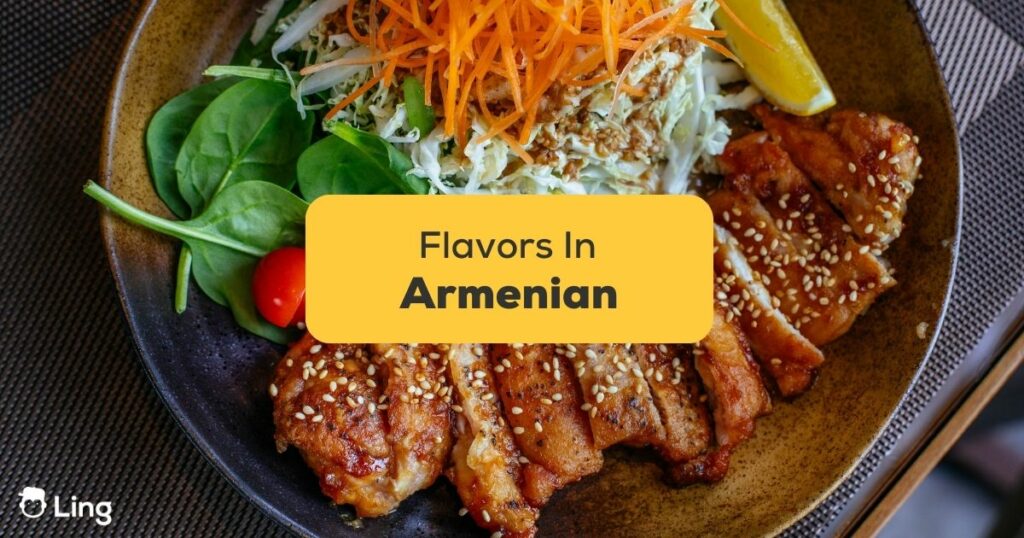Wondering about the terminologies for flavors in Armenian cuisine? Well, you’re on the right post! Welcome to another sumptuous serving of language exploration. Today’s focal flavor is not housed in a fancy-tasseled, Michelin-starred restaurant, nor does it dwell within an exotic, secret spice box. Instead, it exists in an equally beguiling and delicious sphere – language! Yes, you heard it right, and not just any language, but the soulful Armenian language.
Now, you may ask, what in the big wide world does language have to do with flavors? Well, remember that time you tried your first sushi? You were not just tasting the raw fish or the pickled ginger but savoring a small bite of Japanese food culture. Or recall when you finally identified the herby hint of oregano in your favorite pizza slice? That’s the taste of Italy having a friendly chitchat with your taste buds.
Each flavor ultimately captures a snippet of its homeland culture, offering us an intimate taste trial. Savoring these, we get a pinch and dash of the locale’s history, community, and spirit. Similarly, the words we use to describe these flavors are also part of this grand feast, carrying their unique cultural tales. And today, we’re venturing into the Armenian feast! Let’s begin!
Flavors In Armenian
Ready to start speaking like a native Armenian speaker? Discover the best words in this section!

Savoring The Savory: “Tsavateghakan” 🧂
Let’s embark on the enticing gastronomic journey of “tsavateghakan” or “ծավալեղական,” the Armenian term for savory. The term “tsavateghakan” is derived from the Armenian word “tsav,” which means “taste.” Essentially, it’s the taste that packs a punch, a flavor that turns a simple dish into a celebration on your taste buds. It’s like a VIP party right in your mouth that your taste buds were lucky enough to bag an invite to!
So, what does savory, or “tsavateghakan,” taste like in the diverse Armenian cuisine? Let’s put on our aprons and explore a couple of iconic dishes that define this flavor.
1. Dolma
A signature Armenian dish, Dolma, is a shining example of savoriness. Stuffed with a tantalizing mix of meat, rice, spices, and herbs, these vine leaves or cabbage rolls are the epitome of “tsavateghakan.” The unique blend of ingredients marries into a flavor that’s delightfully rich and complex. Each bite sings a sonnet to savoriness that lingers on your palate, making you crave for more.
2. Khorovats
Let’s move on to Armenia’s quintessential BBQ – the Khorovats, a testament to the mesmerizing charm of “tsavateghakan.” Grilled to perfection, the meat (often pork, mutton, or chicken) is drenched in a savory bath of spices, garlic, and onion. The result? A juicy explosion of mouthwatering savoriness that would make your taste buds break into an appreciative jig.

Sweeten The Deal: “Katu” 🍬
Next up is sweet; it’s “քաղցկալ” in Armenian, pronounced as “katu.” While it might sound like a simple word at first, it leads us deep into the heart of the country’s dessert traditions, each bite revealing the love, history, and artistry that flourishes in Armenia’s cuisine.
Get ready to satisfy your sweet craving as we plate up some iconic “katu” dishes that sugarcoat Armenia’s culinary scene.
1. Gata: Flaky Bliss
Gata is a scrumptious Armenian pastry with several layers of flaky dough and rich, sweet filling. Traditionally, the filling is made with a mix of sugar, butter, and flour, sometimes enhanced with the smoky allure of vanilla. Baked to perfection, the delicate pastry promises a burst of “katu” happiness with each crumbly bite. According to the locals, it’s a symbol of Armenian culture, often prepared for special occasions, making it an essential part of celebrations.
2. Ttu Lavash: Fruit Leather for the Ages
Before you mistake it for standard fruit leather, let us introduce you to Ttu Lavash – the tantalizing Armenian twist on fruit leather that captures the vibrant history and essence of local fruits. Made with fruit pulp and often seasonal harvests, Ttu Lavash sings a sweet serenade to Armenia’s orchards.

Bring Some Bitterness: “Tsrats” 🍋
Not every flavor in the food world is about saccharine succulence or savory savoriness. Sometimes, it’s the bitter notes that add that unexpected twist, the finale to the symphony, the small conflict in the plot of your dinner plate’s story. In Armenian, this thrilling bitter note is called “tsrats”.
For those of you wrinkling your noses at the thought of “bitter,” hold on to your spoons! The bitterness we’re referring to isn’t the kind you experience with an overbrewed coffee or half-bitten green almond; instead, it’s the subtly enticing aroma, the elegant shadow in a dish that accentuates other flavors, the “tsrats” note.
1. Tan: Armenia’s Yogurt Beverage
First on the list is Armenia’s traditional yogurt beverage known as “Tan.” Made from a base of yogurt, diluted with water and a pinch of salt, Tan often brings a surprising bitter note (“tsrats”) to its flavor profile, especially if left to ferment a little longer. This twinge of bitterness not only cools you down on a sweltering day but also serves as a palate cleanser between meals, setting the stage for your taste buds to savor the next dish in all its glory.
2. Ghapama: The Stuffed Pumpkin
Next up, we bring you Ghapama, a festive Armenian dish made by stuffing a pumpkin with rice, dried fruit, and sometimes, honey. Ghapama stands out in its “tsrats” application—as the pumpkin roasts, it develops a slightly bitter note that perfectly balances the sweetness of the fruits and honey, painting a culinary picture that is both complex and comforting.

Explore The Exciting: “Tski” 🥵
In the Armenian language, the word for hot or spicy is “ծխացվածություն” (tskhatsvatsut’yun) or, more colloquially, “tski”. Sounds exciting already, doesn’t it? It’s the term that introduces the fiery dance of chili and the warm caress of spices in Armenian cooking, adding a kick to the culinary narrative that’s not easy to forget.
The heat wave of “tski” peppers many an Armenian dish, and we’re about to journey to two significant pitstops – dishes that perfectly encapsulate the “tski” spirit. Are you ready to embrace the heat?
1. Khashlama: Armenia’s Spicy Stew
Khashlama, a slow-cooked meat stew gently kissed with the heat of Armenian spices, is a beloved representation of the “tski” flavor. This hearty dish combines the tender goodness of meat with a symphony of vegetables, all serenaded by a selection of spices—providing a layer of heat that is delicious, comforting, and just hot enough to make you sit up in surprise.
2. Lula Kebab: The Spiced Grill Delight
Next, we shine the spotlight on Lula Kebab, a quintessential Armenian dish popularly known for its “tski” charm. These caramelized meat skewers packed with the punch of spices bring a top-notch heat game to the table—an exciting mix of texture and taste that provides a sizzling experience on your palate.

The Love For Sourness: “Tsuregh” 🍏
In the heart of the Armenian language, the word for sour is “թսուրեղ” (tsuregh). Yes, it might be a bit of a mouthful, but it perfectly encapsulates the zing and lively punch that sourness brings to Armenian dishes. So, tighten your apron, prepare your palate, and let’s explore the tangy terrain with a couple of “tsuregh” inspired delights!
1. Spas: The Tangy Yogurt Soup
First up on our “tsuregh” tour is Spas, a traditional Armenian yogurt soup that sings the praises of sourness. Made with tart yogurt, grain (usually hulled wheat or rice), and a handful of herbs, Spas takes your taste buds on a tangy rollercoaster ride—a thrilling splash of “tsuregh” that feels like sunshine on a cloudy day.
2. Pickles: Armenia’s Crunchy Condiments
Armenians have a long-standing love affair with pickles, a staple in most households and an irreplaceable sidekick to many main dishes. These crunchy delights, bathed in a tangy brine, bring a “tsuregh” punch that brightens the plate. From tangy tomatoes to puckeringly perfect pickled cucumbers, each pickled piece contributes a loud crunch and a bold tang—a symphony of flavors that turns any meal into a culinary orchestra.
Learn Armenian With Ling
Enjoyed all the words and Armenian food we covered above? From sour cream-based dishes to those traditional Armenian dishes with minced meat, we gave you a hint of what to expect of them in terms of the flavor factor. Did you enjoy this post? If you did, now is the best time to learn more about the Armenian culture and language with the Ling app! Give it a try today by downloading it from the App Store or Play Store for FREE!































































